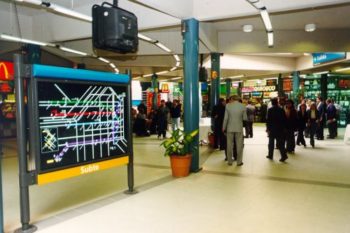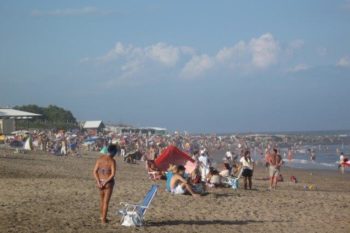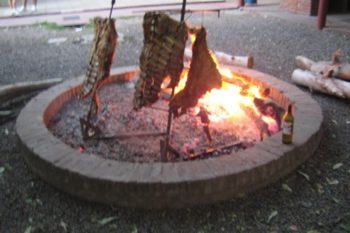Mi Buenos Aires querido,
Cuando yo te vuelva a ver
No habrá más penas ni olvidos
(My beloved Buenos Aires / when I next return to see you / I’ll grieve no more)*
These are the opening lines of one of the most famous tango songs of all times, Mi Buenos Aires Querido, released in 1934. It was also the soundtrack of an eponymous 1936 film. The song (and the film) is about an emigrant’s yearning for his beloved city, his old haunts and the people he left behind.
Melancholy, hard luck, crushed dreams; longing for hearth and home, unrequited love, heartbreak, social issues, the passage of time are the recurrent themes of tango songs.
However, it’s not all gloom and doom: other songwriters wrote about gambling, horse-racing, football (soccer, that is,) the ubiquitous café and friendship. Some early tangos were quite racy too!
Some say that the hodgepodge of cultures that was Buenos Aires in the late 19th century influenced this musical style, even contributed to create it. The Germans, for instance, brought their accordions along, which were soon adopted by tango musicians and from which the bandoneón, a larger version, evolved.
The tango’s birthplace is said to be the arrabal, the poorer suburbs of a constantly growing city. In the 1940s, some songwriters contrasted the arrabal with the dissipation and debauchery of expensive nightclubs in their lyrics. As a result, the idealized arrabal became the symbol of childhood memories and the loss of innocence.
Tango has a particular language called lunfardo. It is an odd mixture of Italian and African expressions borrowed from immigrants and former slaves which were later transformed by use. Many lunfardo words have permeated everyday speech, like laburar, from the Italian lavorare (to work.) It can be difficult to understand some lyrics without some knowledge of lunfardo. It should be used with care, as it is very colloquial.
There are a handful of myths about tango. Namely, that it originated in brothels, was rejected by polite society and prohibited by the Catholic Church. There is no conclusive evidence to support any of these statements but they definitely give tango an aura of romance.
When I was younger I used to think that tango was for the crumblies and totally “uncool.” As it turns out, I was not alone in this. After enjoying a golden age in the 1940s and 50s, tango fell victim to the generational and countercultural confrontations of the 60s and 70s. As a result, it was relegated to the older generations, while the young listened to rock’n’roll. Tango experienced a revival in the 1990s, when the younger set rediscovered it and musicians began experimenting with other genres like jazz, rock and electronica.
My own rediscovery of tango came about when I left my beloved Buenos Aires to live in a foreign country. In a strange sort of way, living abroad made me reconnect with my culture. One of the things I did was, of course, listen to tango, especially electronic tango (my favourite bands are Bajofondo Tango Club and Gotan Project)
Tango is the soul of the city. Tango is Buenos Aires. Buenos Aires is tango. Images of the streets I know so well flash through my mind when I listen to this music. And now I have a deeper understanding of it: the homesickness, the nostalgia, the longing.
Mi Buenos Aires querido indeed.
* This feeble attempt at translating these lines is my own (with some help from my dear husband).
Read more:
Buenos Aires cafe culture – lounge like a local
New life, new culture, new timetable – adapting to life in Spain
KTV extravaganza – karaoke is big in China









I loved this post Ana! Tango is so often mentioned in association with Argentina and Buenos Aires and I always wondered whether it’s really important or whether it’s just something foreigners latch onto. So I really enjoyed reading about what it means to you personally. I love Gotan Project too! I don’t know the other band you mentioned, I will check them out.
Can you see Italian influences in the Spanish spoken in Argentina as well, or are they mainly restricted to lunfardo? And how different is lunfardo? Can you understand it easily?
Liz, thank you for your comment. Although tango is a good ‘selling point” when it comes to tourism, it really is an intrinsic part of our culture.
As regards the influence of Italian in the way we speak, a couple of years ago I read a newspaper article about a study conducted by an Italian university and the conclusion was that we (especially the people from Buenos Aires, not so much in the rest of the country) speak Spanish with the same intonation as Italian and make very similar gestures to those of the Italians make when speaking (my husband says I speak with my hands, if they were tied behind my back, I wouldn’t be able to communicate!) Also, we borrowed lots of words and phrases too, especially swear words (those are fun to use!)
By the way, my maiden name is Italian too, Astri.
Although we use many lunfardo words and phrases on a daily basis (in really informal situations), many of the more obscure one remain incomprehensible, so much so that there are Lunfardo/Spanish dictionaries.
Last night I went to see The Secret in Their Eyes (the Argentinean film that won the Academy Award for Best Foreign Film ) and it’s full of common lunfardo expressions. If you have the chance, go see it!
Wow, that was along-winded reply! 🙂
I tried to learn the tango recently – but without a regular partner it was an unmitigated disaster! Beautiful, sensual dance, though. One day..!
As Liz said, it’s very nice to read a personal point of view. Tango is so nice to watch, I wish I could dance it!
Another suggested post for you, Ana: Argentinian cinema. In the film “El mismo amor, la misma lluvia”, a cinema here, in Barcelona, once you bought the ticket, they gave you a little glossary with Argentinian expressions from the film so we could get all the nuances. It was very cool! I must have it somewhere in some box! 🙂
I really want to see El segreto de sus ojos. I think I will have to wait for DVD though, we don’t get many foreign films over here.
The first time I went to see an Argentinian film I had only been learning Spanish for one month. Imagine how lost I was! It’s a good idea for the cinema to give a glossary of Argentinian expressions. Maybe that would help with British / American films as well. Occasionally American films use expressions that I don’t understand.
@Lin – thanks for commenting. Hope you will find the right partner one day!